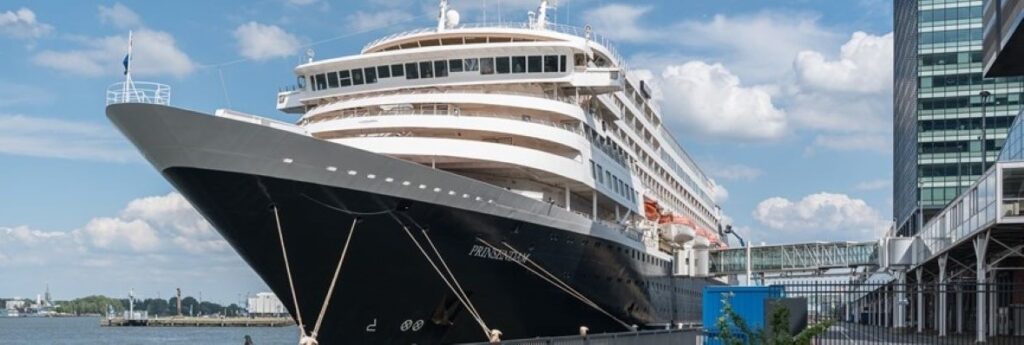In a measure to combat over-tourism, Amsterdam will reduce number of sea cruises calling in the Dutch city by almost half in 2026, while aiming for its cruise terminal to leave the city altogether by 2035. The number of sea cruises that moor at the Passengers Terminal Amsterdam (PTA) will drop from 190 to a maximum of 100 per year and the PTA will also immediately return to one berth and cruise ships required to use shore power by 2027.
“The city council wants a liveable, clean and sustainable city. Sea cruise is a polluting form of tourism and contributes to crowds and emissions in the city,” says city alderman Hester van Buren. “By limiting sea cruises, requiring shore power and aiming for the cruise terminal (PTA) to move from its current location in 2035, the council is responsibly implementing the council’s proposal to stop sea cruises.”
Further, “The aim is a (definitive) departure of the PTA from its current location on Veemkade in 2035,” city council said in a statement, adding, “With these measures, the city is implementing the municipal council’s wish to put an end to the cruise terminal in Amsterdam. Banning cruise ships is also part of a broad package of measures to limit the growth of tourism and combat nuisance.”
The city notes that over 40 of the cruises can be accommodated in nearby Rotterdam. It also acknowledges that the restriction will reduce spending by sea cruise passengers and shipping companies in the city – “mainly due to less spending by tourists in, for example, museums, catering, shops and excursions, but also due to less fuel consumption. For the city this means less income because less tourist tax is collected.”
Sustainability
Nevertheless, reducing sea cruises is just one of over a hundred measures the city says it is implementing to achieve a sustainable visitor economy.
For example, on Jan. 1, 2025, central Amsterdam – the area inside the S100 ring road – will become a zero-emission zone for new commercial and goods vehicles. In addition, the rules for the low-emission zone located within the A10 ring road are being tightened. The most polluting diesel cars will no longer be permitted to enter the low-emission zone. With these rules, we are aiming to make Amsterdam’s air cleaner and healthier and to fight noise pollution.
As for the cruise ship limits council says, “Besides reducing the tourist crowds, the measure also has positive effects on the reduction of pollutant emissions…. Not just because of the arrival of fewer ships, but also due to the obligation to have shore power from 2027 onwards. The use of shore power also ensures less noise pollution from moored ships. Sea cruising remains a particular polluting sector of tourism that uses non-sustainable energy sources such as diesel oil and LNG…”

